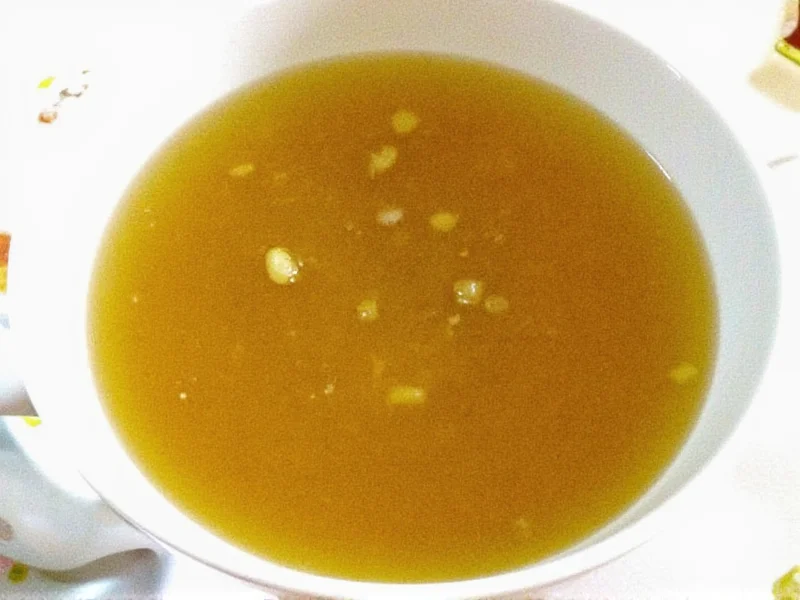Understanding the distinction between vegetable stock and vegetable broth is essential for home cooks and professional chefs alike. While many recipes use these terms interchangeably, particularly with plant-based preparations, subtle differences affect flavor profiles and culinary applications. Unlike meat-based stocks and broths where bones create a clear distinction, vegetable versions differ primarily in preparation method, seasoning, and intended use.
| Characteristic | Vegetable Stock | Vegetable Broth |
|---|---|---|
| Seasoning | Unseasoned (no salt) | Contains salt and seasonings |
| Preparation Time | Longer simmer (45-90 minutes) | Shorter simmer (30-60 minutes) |
| Flavor Profile | More concentrated, deeper flavor base | Milder, ready-to-consume flavor |
| Primary Culinary Use | As a cooking foundation for sauces and soups | As a finished product or in recipes requiring liquid |
| Sodium Content | Naturally low sodium | Contains added sodium |
Understanding Vegetable Stock
Vegetable stock serves as a flavor foundation in cooking rather than a finished product. Professional chefs typically prepare vegetable stock by simmering aromatic vegetables like onions, carrots, and celery (known as mirepoix) along with herbs and other vegetables for an extended period—usually 45 to 90 minutes. The extended cooking time extracts maximum flavor compounds and creates a more concentrated liquid.
What defines authentic vegetable stock is its lack of seasoning, particularly salt. This intentional omission gives cooks complete control over the final seasoning of their dishes. When preparing vegetable stock at home, many chefs avoid strong-flavored vegetables like broccoli or Brussels sprouts that can dominate the delicate flavor balance. Instead, they focus on neutral, aromatic vegetables that provide a versatile base for various cuisines.
Understanding Vegetable Broth
Vegetable broth represents a more finished product designed for immediate consumption or direct use in recipes. Commercially prepared vegetable broth almost always contains salt and additional seasonings like garlic powder, onion powder, and herbs. The preparation time is typically shorter than stock—around 30 to 60 minutes—resulting in a lighter, more immediate flavor profile.
When examining store-bought options, vegetable broth vs vegetable stock labeling often reflects marketing choices more than culinary distinctions. Many manufacturers use "broth" to indicate a product ready to drink, while "stock" suggests a cooking ingredient. However, this isn't a consistent industry standard, particularly with vegetable-based products where the traditional bone-based distinction doesn't apply.
When to Use Each in Cooking
Knowing when to use vegetable stock versus vegetable broth significantly impacts your cooking results. Use vegetable stock when you need a flavor foundation for sauces, gravies, or complex soups where you'll control the final seasoning. Its unseasoned nature prevents dishes from becoming overly salty during reduction.
Choose vegetable broth when you need a ready-to-use liquid for cooking grains, thinning soups, or creating quick sauces. Its pre-seasoned nature saves time but requires careful seasoning adjustment in your final dish. For health-conscious cooking, low sodium vegetable broth alternatives provide flavor without excessive salt, though they may lack depth compared to properly made stock.
Substitution Guidelines
Can you substitute vegetable broth for vegetable stock in recipes? Yes, with important considerations. When substituting broth for stock, reduce added salt elsewhere in the recipe by approximately 25-50% to compensate for the broth's seasoning. Conversely, when using stock in place of broth, you'll need to add salt and seasonings to achieve the intended flavor profile.
For recipes requiring intense vegetable flavor, concentrated vegetable stock substitutes like vegetable bouillon cubes or paste can work, but they often contain additives and preservatives. The best substitution method involves reducing homemade vegetable stock by half to create a more concentrated version that mimics commercial paste products without artificial ingredients.
Homemade Preparation Tips
Creating homemade vegetable stock from scratch yields superior flavor to store-bought versions. Save vegetable trimmings (onion skins, carrot tops, celery leaves) in a freezer bag until you have enough for a batch. Avoid strong-flavored vegetables like cabbage or beets that can overpower the delicate balance. Simmer ingredients gently—never boil vigorously—as this extracts bitter compounds from vegetables.
For vegetable broth preparation at home, follow the same process but add salt (about 1 teaspoon per quart) and additional seasonings during the last 15 minutes of cooking. Many home cooks enhance vegetable broth with nutritional yeast for umami depth or a splash of soy sauce for complexity, creating what some call "chef's vegetable broth" with restaurant-quality flavor.
Storage and Shelf Life
Proper storage affects both vegetable stock shelf life and vegetable broth longevity. Freshly made stock or broth keeps for 4-5 days in the refrigerator. For longer storage, freeze in ice cube trays then transfer to airtight containers—this vegetable stock freezing method allows you to use precise amounts as needed. Properly frozen, both maintain quality for 4-6 months.
Commercially canned vegetable broth typically has a 1-2 year shelf life, while boxed versions last 6-12 months unopened. Once opened, both stock and broth should be treated like fresh versions regardless of packaging. The difference between canned vegetable broth and stock primarily relates to sodium content and seasoning rather than preservation method.
Common Misconceptions
One widespread misconception is that vegetable stock contains bones like meat-based stocks. This isn't possible with vegetable products—any reference to bones in vegetable stock labeling indicates either a mislabeled product or one containing animal-derived ingredients. True vegetable stock contains only plant-based ingredients.
Another common confusion involves vegetable cooking stock vs broth in international cuisines. In French cuisine, "bouillon" refers to broth, while "fond" indicates stock. However, these distinctions blur in everyday cooking, especially with vegetable preparations where the traditional bone-based differentiation doesn't apply.











 浙公网安备
33010002000092号
浙公网安备
33010002000092号 浙B2-20120091-4
浙B2-20120091-4